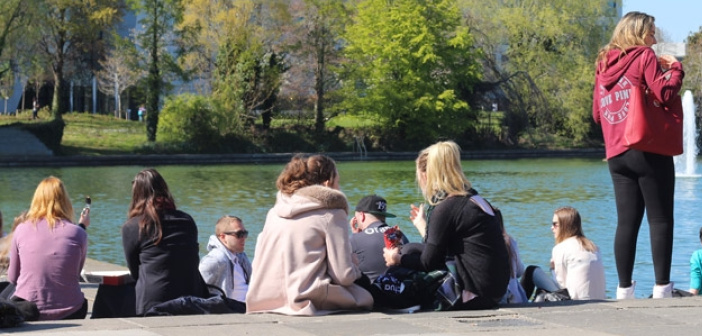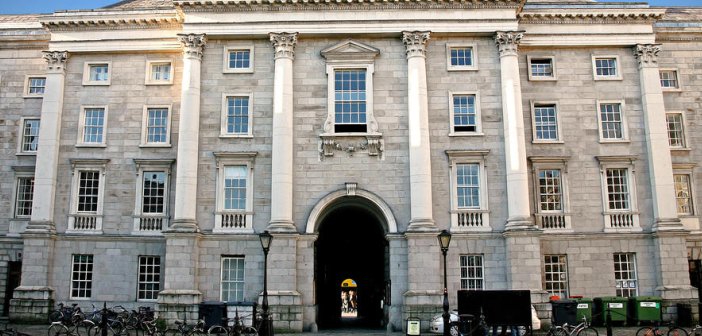Dublin’s Educational Inequalities Are Not Exactly an Astounding New Discovery
“School-leavers from more affluent backgrounds are much more likely to have places in universities offering high-points,” concluded the most recent Irish Times study on educational inequality. It’s a conclusion that, from anyone I’ve talked to about it, caused outbursts of laughter and eye-rolling, interspersed with audible groans. It’s not the nature of the study’s outcome that caused this derision of course. It’s just that in my part of the world, the north inner-city of Dublin, it’s not exactly an astounding new discovery.
A previous study, conducted by the Higher Education Authority in 2014, found that progression to 3rd level from the inner-city, in Dublin 1 and Dublin 2, stood at 23% and 26% respectively, compared with 84% in Dublin 4 and 99% in Dublin 6. In Dublin 17, covering Darndale and Coolock, the figure was lowest of all – 15%.
Three years may not seem like a particularly long time within which to expect a seismic shift, but the issue is that the conditions simply don’t exist for any material change – whether within a year or a decade. As a consequence, we’re left with an endless carousel of reports and studies such as the above, the outcome of which (despite the best intentions of its authors) is to pique public interest in the issue of educational inequality for a day or two. And then normal, silent service resumes.

Access programmes, such as the Trinity Access Programme and DIT’s Access Foundation course, are doing exceptional work with limited resources. Lynn Ruane’s ascent last year to the Seanad, via the Trinity Students’ Union presidency, having come through TAP, is a shining example of just how influential such programmes can be – and her own experience has surely been a source of inspiration to many.
The trouble is that these programmes become viable only at a certain point in a young person’s life – the TAP mission statement, for example, outlines that they “offer a range of access programmes for people with the enthusiasm, motivation and ability to succeed at third-level.” It’s not, and shouldn’t be, their job to enthuse and motivate young people in marginalised communities – but it’s a missing piece and a crucial one.
The healthy life experiences of children and young people that foster enthusiasm and motivation in later life rely upon a living environment that has sufficient resources, amenities and opportunities to develop. It seems like stating the obvious, but frankly it hasn’t been obvious enough for successive governments to address the fact in any meaningful way.
The North-Inner City Task Force, launched last year in response to the escalation of drug-related violence, surveyed local community projects as part of its work and found that every single respondent felt “an impact on staffing levels” while 82% felt “a change in the services being offered” in the period between 2008 and 2016. A tangible example is that in October 2014, it emerged that the Government had cut funding to community services in the north-inner city area by 38% – decimating a wide range of organisations who carry out invaluable work with young people.
A report last week by Ellen Coyne in The Times highlighted that the opening of a community hub which local groups had campaigned tirelessly to secure for almost 20 years, and for which “Enda Kenny told residents at a heavily publicised meeting in Sheriff Street” that they would get, has now been scrapped on the grounds that “Dublin City council cannot afford the project because costs unexpectedly doubled,” while a commitment to renovate an old Magdalene laundry for use as a new artists’ studio has failed to progress since the public meeting.

My own area, The Monto (as it’s still known locally despite the council’s best efforts to gentrify beyond recognition) is a 5 minute walk from the city’s main thoroughfare of O’Connell Street. It’s 10 minutes away from a booming, bustling IFSC. Yet it couldn’t be any further from experiencing and benefitting from the quality of life that’s taken for granted elsewhere. It’s frustrating to have a sense of pride in your community tempered so regularly by the visible heartbreak of people around you. It’s a heartbreak that manifests itself in a vicious cycle of being failed by inadequate mental health services, leading to self-medication, leading to addiction, leading to further poverty. It’s the heartbreak of a flat that’s falling asunder for some, and no flat at all for others.
Yesterday morning, I watched a 15 year-old boy get dragged out of Liberty House flats and into a Garda car. Low level dealing. The cat-who-got-the-cream expressions of glee on the two cops who escorted him up the lane struck me as being so at odds with the stomach-churning reality of this child’s situation. In all likelihood, that was the beginning of a cycle – one that’s routine in his environment, but one that will push him further and further away from the chance of a safe future, let alone the comparably lofty heights of an access programme.
In the absence of adequate healthcare, housing and community services, anecdotes like the above will always be routine – and that haunting 23% third level participation rate will never increase in any meaningful way.
In the mean time, and with respect, excuse us for our apathy towards yet another report.
